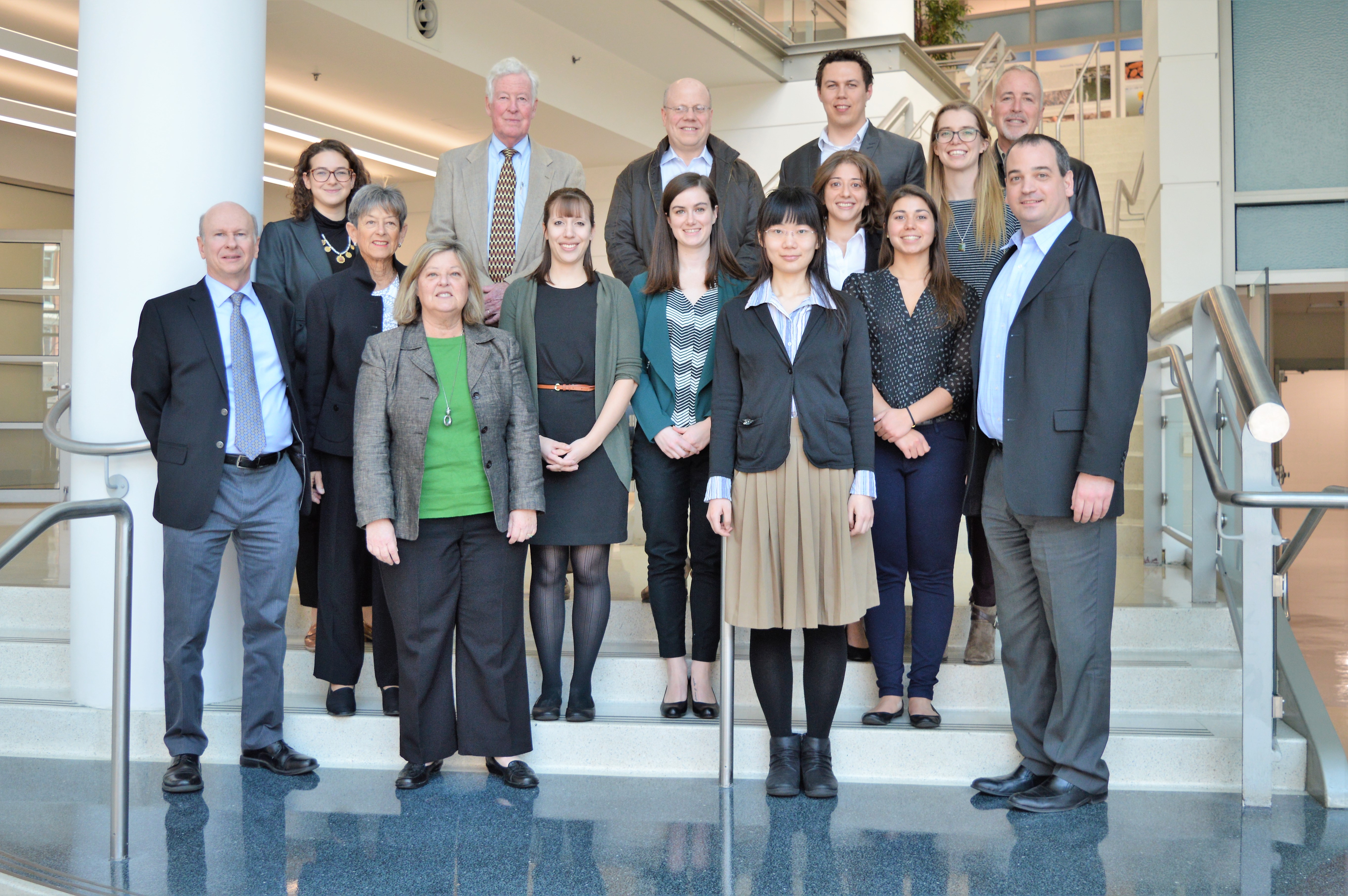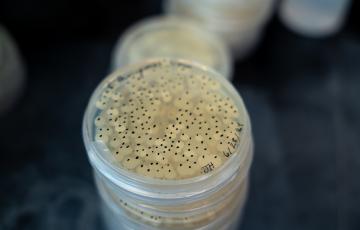REEF highlights business side of science for IMET students

Standing in front of a PowerPoint, each graduate student takes a deep breath as they prepare to give a presentation unlike most they face during their academic career.
Instead of a committee of scientific advisers, they face a table of investors who will hang on each word as the students pitch a product that combines years of work in the lab with dozens of still-fresh business lessons.
This is the pinnacle moment of the Institute of Marine and Environmental Technology’s Ratcliffe Environmental Entrepreneur Fellowship (REEF) program.
Participating students create a business product and then polish that idea over the course of a year with guidance from industry mentors. They have to test every aspect of their product to determine if it could be viable on the market, considering regulatory issues, marketing and manufacturing. Then they face the final test, the pitch presentation.
“It’s a little intimidating,” admits Ryan McDonald, a Ph.D. student at IMET (University of Maryland, Baltimore County).
The payoff comes at the end of the presentations. The students don’t actually receive money from the investors, but they do get the next best thing. The experienced panel offers them advice that highlights potential flaws and what it could take to move the product forward.
“Some of these people hear 10-15 pitches a week, so they know what they’re talking about and what you need to improve if you want to go after real money,” McDonald said. “Just having them there and the feedback we get at the end, I think, is the most valuable part of the whole course.”

Dr. Paul Silber (Blu Venture Investors) shares his comments for one of the presenters.
McDonald and two other Ph.D. students at IMET, Miranda Marvel (UMBC) and Kelsey Abernathy (University of Maryland, Baltimore), earned what the program calls the Top 3 Pitches out of the seven students that participated.
This was the first year the program was open to students beyond IMET. Two students from the University of Maryland Center for Environmental Science’s Chesapeake Biological Laboratory also participated this year.
McDonald, Marvel, and Abernathy were completing their second year in the program. McDonald decided to perfect his pitch from year one, while Marvel and Abernathy carried over lessons from their first year to create completely new products.
“Doing it a second year really gave me an advantage because I knew what didn’t work last year,” Marvel said. “I shifted to a product I’m more excited about and that could help people.”
Marvel’s pitch was for a diagnostic tool that would help people with home aquariums or who run pet stores identify problems that cause stress and health problems in fish. This tool uses colors to signify different stressors. For example, red signifies a pathogen infection and yellow, temperature stress. Blue indicates high nitrogen levels or green could mean general stress.
Working in several different fish facilities in the past few years gave Marvel the idea.
“I noticed a common problem in every single place that houses fish is that you can’t really diagnose any kind of pathogen infection. There are always problems with disease outbreaks, however, it’s really hard to identify that or diagnose exactly what’s going on. Usually you don’t know there’s a problem until fish start dying, in which case, it’s usually too late.”
Abernathy came up with a product that also uses color, but in a way that would help researchers. Hers is a rapid disease diagnostic test for aquaculture that uses the molecules found on cell surfaces that naturally act as detectors of viruses and bacteria.
“Traditional disease diagnostic tests can take several hours to detect, and require multiple reagents, as well as expensive machines to read the tests,” she said. “The idea with this product would be that the plate would be coated with these detector molecules. You would add a blood sample from your fish and if the pathogen was present, you would see a color change instantaneously.”
McDonald refined the business he envisioned in his first year of the REEF program. Called MicroArt, his company sits at the interface of art and science.
“I like to pretend to be an artist sometimes and I’m a microbiologist, so it was combining those two passions of mine together,” he said.
His goal is to increase student engagement through hands-on learning where live organisms, including microbes that are pigmented or that naturally glow in the dark, become the paint.
“There’s some artistic element to it, but we’re also going to develop curriculum to go with it. We’re using microbiology and art as a vehicle for teaching key STEM principles,” he said.
McDonald is partnering with the Baltimore Underground Science Space, a local laboratory that offers events and work space, to prototype and beta-test his product. His action reflects what he said was the best lesson he learned from the REEF program: “You can’t do everything on your own, so know what your limitations are and surround yourself with people who can bolster your weaknesses.”
Marvel and Abernathy have been applying to local pitch competitions to keep up the momentum REEF started. Marvel hopes to earn some seed money for her company. Abernathy plans to pursue another product that she imagines would be easier to market than her REEF project, at least while she’s still learning to navigate the Baltimore biotech industry.
None of the three students were necessarily interested in pursuing the business side of science as a career before REEF, but participating in the program sparked their interest.
“I had no interest in doing business, but I also knew I didn’t want to do academia as a career, so I was curious by the fact that it was an alternative,” Abernathy said. “The first time I went through, I realized how cool it was to meet these different people and learn all the different backgrounds they came from.”
It was enough to convince her to apply for a second year in the program.
“Now I definitely want to go into the biotech industry,” she said.
The students agreed REEF gave them skills they can apply to any career, however.
“Running a lab is like running a small business, you have to manage people, buy supplies, and run a budget,” McDonald said.
“It helped me break out of my shell more,” Marvel added. “Normally scientists are very introverted, but it helps you put yourself out there and network with other people and come up with ideas you wouldn’t normally.”


